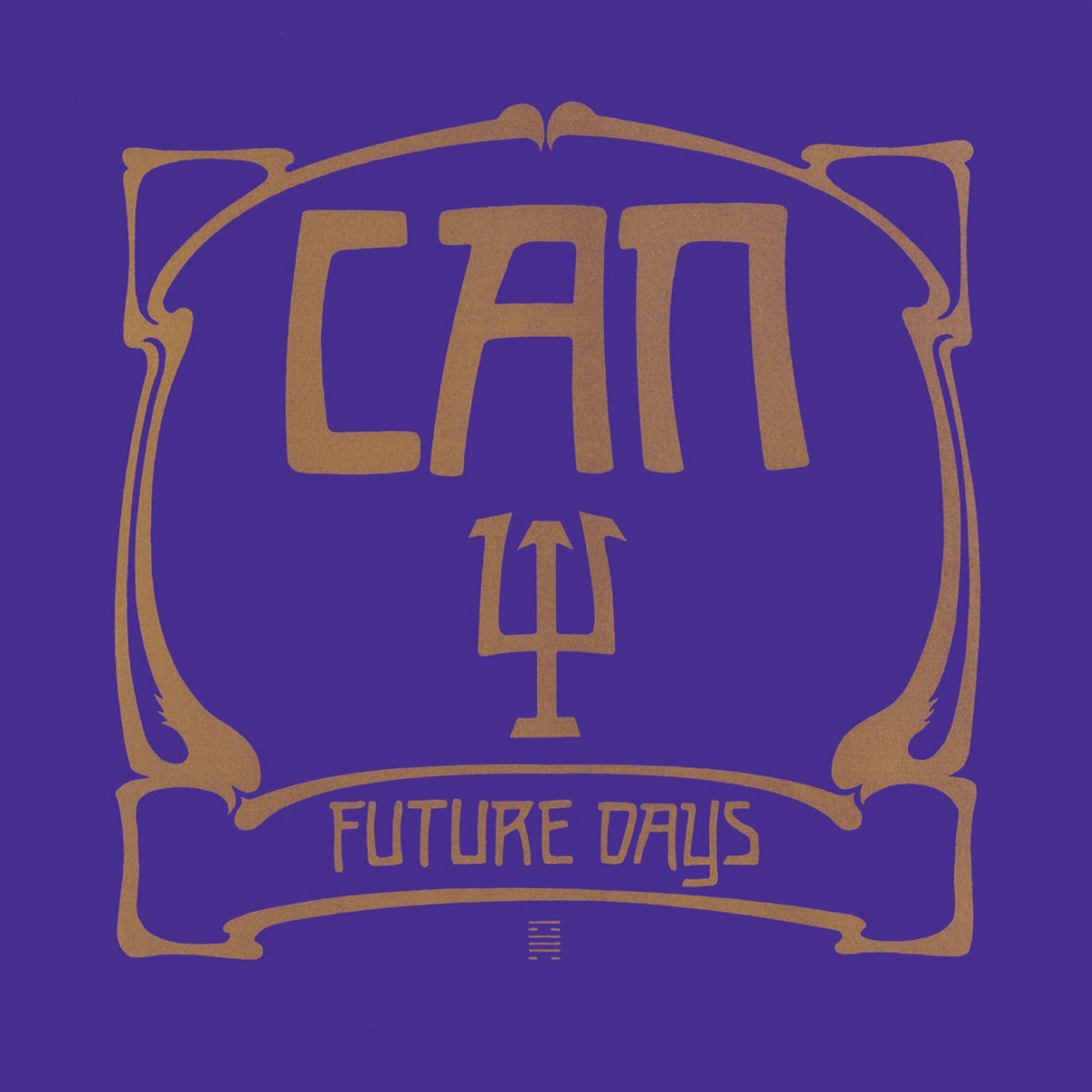
“You hide behind a borrowed chase for the sake of future days.”
In my estimation, Future Days is the pinnacle of Can’s recorded output—particularly the opening title track, which is one of the crowning achievements of Krautrock. It still sounds alien, progressive, and untouchable, transcending as it does the confines of any single musical style. At the same time, though, it also sounds ancient and timeworn, as if the entire song had existed for millennia, long-buried, waiting for the tinkerers to come dig it up, dust it off and unleash it upon the world.
Nearly fifty years since its release, any post-rock or ambient outfit working today would be hard-pressed to match its stature. Ushered in on the sound of waves, shuffling percussion, and hints of melody—a combination which suggests an act of discovery—it meshes a solid backbone of shambolic rhythms and groundbreaking synth work with a barrage of found sounds and the low key mumbled ruminations of Damo Suzuki. It explores a thousand musical ideas while remaining a coherently-structured piece, and achieves a wonderful groove wherein the collective shares the spotlight without ego. It’s truly breathtaking, a shape-shifting paean of the highest order.
The problem is that the title track, which opens the record, is nearly insurmountable. There’s another three tracks left, spread across a half an hour, but among them they approach the majesty of ‘Future Days’ only once during the shifty sidelong closer ‘Bel Air’, a twenty-minute multi-part suite that luxuriates in the mesmerizing mode introduced in the opener, moving between various grooves and tempos but managing to produce a single coherent piece. There’s an interlude somewhere in the middle, during which the music is overtaken by birdsong and the wild humming of insects, after which the sublime opening riff is taken up again with a slightly different approach that incorporates the pleasurable ambiance of the interlude. For a moment the music is tranquilized and beautifully serene.
Sandwiched in between the two bookends are ‘Spray’ and ‘Moonshake’, two less noteworthy songs that neither elevate nor detract from the record as a whole. The former offers a menacing, effects-laden, two-part ode to Avant-garde jazz legend Sun Ra that blossoms into a euphoric coda, while the latter is a chilled-out, pop-oriented samba groove that points toward the band’s more accessible work in the future.
On the two previous albums—which many fans cite as the band’s apex—Damo Suzuki’s maniacal howling was crucial to the band’s sound, but here his contributions feel less vital. His unpredictable croon is much less distinct in the mix, functioning almost entirely as an auxiliary instrument. Even while the band is performing as a community of equals, the style of music they’re playing does not lend itself to the wild ululations that we’ve become accustomed to from Suzuki. As a result of this, his erratic mix of garbled English and scat singing, while perfectly accenting the music his peers are conjuring, is easy to discount. I find the combination to be downright enchanting, but clearly Suzuki disliked the lack of emphasis on his contributions as he decided to take a long hiatus from the music industry after the album’s release.
Future Days serves as a fitting end to Can’s most productive and innovative run. Pulling a variety of influences—Afrobeat, jazz fusion, blues, samba, funk, ambient, collage, symphony—and selectively utilizing a typically eclectic array of instrumentation to great effect, this culminative album finds the band preternaturally in-sync, creating ethereal music that has undulated with vibrant energy for five decades, and now serves as a high-water mark of every genre it’s influenced.
Favorite Tracks: Future Days; Bel Air.